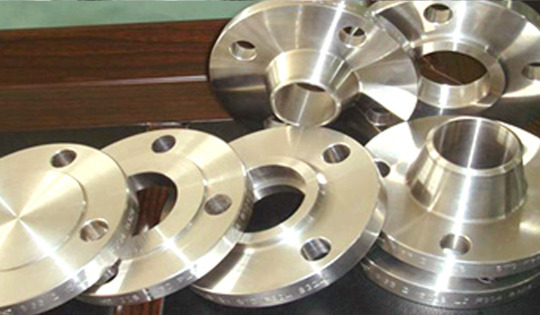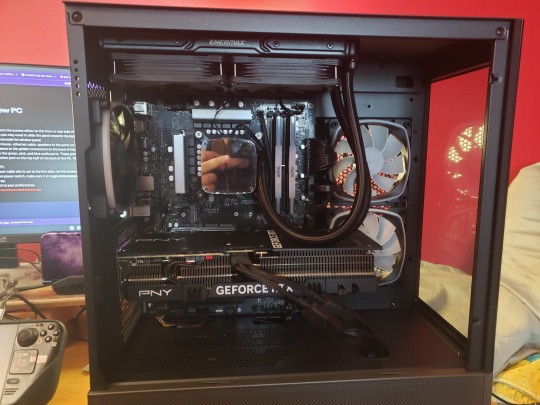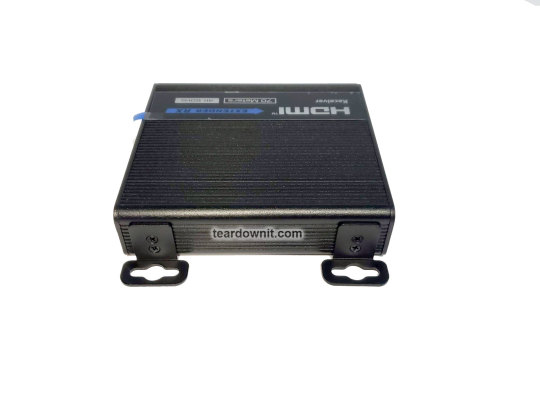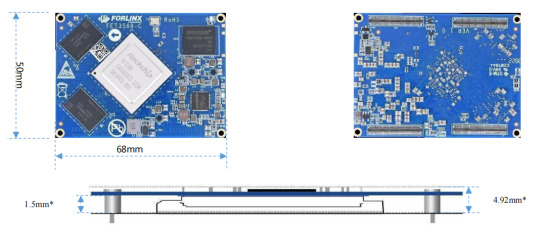#External screw products
Explore tagged Tumblr posts
Text
Analysis of front mold thread core pulling mechanism
When we design molds, we occasionally encounter products with threads. External screw products can be half-exited by front and rear molds, or two sliders can be undercut. For products with high requirements for internal threads, only thread core pulling mechanism can be used. Here is a set of front mold thread core pulling mechanism molds for everyone. Through product analysis, it is found that…

View On WordPress
#core pulling mechanism#External screw products#front mold thread core pulling mechanism#front mold thread core pulling mechanism molds#molded part#Product analysis#thread core pulling mechanism
0 notes
Text
The urge to create smth more elaborate/decorative from the original base design vs both the desire to keep it simple enough to draw repeatedly and the need to have it read clearly, all while keeping it distinct and recognizable 🙃
#aka I have a couple of ideas for comics involving canon ponies and I'm trying to nail down something a little more unique#but also recognizable to the source material; all while remaining easy to read; easy to draw; and being appealing#all for the sake of only two? three?? jokes so far LMAO#I still don't know if I can run the browser and krita at the same time without knocking out the internet lmao#idk why it does it but boy does it ever lately#it's. annoying. I want to be more productive#that and I've got a massive backlog of videos to tackle still#that are admittedly more for listening to than properly watching; and are usually perfect for smth to listen to while drawing#good news is that the most expensive the exact model of adapter I have on this computer is only around $30!#bad news is that I Do Not Have anywhere close to $30!! not to mention I'd have to pay the guy™ to install it for me#and idk what he'd ask for in the vein of a service fee... also I still want that different antenna that I can move instead of just#screwing into the back and hoping for the best; it still screws in mind you but the ports are attached to cords#that are attached to a base that holds the antennae; so that I might move it around a little#that's around $20; at least for the model I looked at. tho I'd also have to check to make sure the parts are compatible#luckily I could probably just ask the guy; and if I have enough on hand I could probably buy one from him since he sells stuff like that to#oh yeah. also on the shortlist is external storage. I need at least as much as my computer can actually hold for backup purposes: 2TB#and I want more later so that I can actually maybe have less shit on my computer and more in appropriate places lol#someday I want a newer better computer actually. tho ideally we'd have abandoned this rotted log of a house by then...#I have other plans and needs but these tags are getting too long as it is lol
0 notes
Text
MIT libraries are thriving without Elsevier

I'm coming to BURNING MAN! On TUESDAY (Aug 27) at 1PM, I'm giving a talk called "DISENSHITTIFY OR DIE!" at PALENQUE NORTE (7&E). On WEDNESDAY (Aug 28) at NOON, I'm doing a "Talking Caterpillar" Q&A at LIMINAL LABS (830&C).

Once you learn about the "collective action problem," you start seeing it everywhere. Democrats – including elected officials – all wanted Biden to step down, but none of them wanted to be the first one to take a firm stand, so for months, his campaign limped on: a collective action problem.
Patent trolls use bullshit patents to shake down small businesses, demanding "license fees" that are high, but much lower than the cost of challenging the patent and getting it revoked. Collectively, it would be much cheaper for all the victims to band together and hire a fancy law firm to invalidate the patent, but individually, it makes sense for them all to pay. A collective action problem:
https://locusmag.com/2013/11/cory-doctorow-collective-action/
Musicians get royally screwed by Spotify. Collectively, it would make sense for all of them to boycott the platform, which would bring it to its knees and either make it pay more or put it out of business. Individually, any musician who pulls out of Spotify disappears from the horizon of most music fans, so they all hang in – a collective action problem:
https://pluralistic.net/2024/06/21/off-the-menu/#universally-loathed
Same goes for the businesses that get fucked out of 30% of their app revenues by Apple and Google's mobile business. Without all those apps, Apple and Google wouldn't have a business, but any single app that pulls out commits commercial suicide, so they all hang in there, paying a 30% vig:
https://pluralistic.net/2024/08/15/private-law/#thirty-percent-vig
That's also the case with Amazon sellers, who get rooked for 45-51 cents out of every dollar in platform junk fees, and whose prize for succeeding despite this is to have their product cloned by Amazon, which underprices them because it doesn't have to pay a 51% rake on every sale. Without third-party sellers there'd be no Amazon, but it's impossible to get millions of sellers to all pull out at once, so the Bezos crime family scoops up half of the ecommerce economy in bullshit fees:
https://pluralistic.net/2023/11/06/attention-rents/#consumer-welfare-queens
This is why one definition of "corruption" is a system with "concentrated gains and diffuse losses." The company that dumps toxic waste in your water supply reaps all the profits of externalizing its waste disposal costs. The people it poisons each bear a fraction of the cost of being poisoned. The environmental criminal has a fat warchest of ill-gotten gains to use to bribe officials and pay fancy lawyers to defend it in court. Its victims are each struggling with the health effects of the crimes, and even without that, they can't possibly match the polluter's resources. Eventually, the polluter spends enough money to convince the Supreme Court to overturn "Chevron deference" and makes it effectively impossible to win the right to clean water and air (or a planet that's not on fire):
https://www.cfr.org/expert-brief/us-supreme-courts-chevron-deference-ruling-will-disrupt-climate-policy
Any time you encounter a shitty, outrageous racket that's stable over long timescales, chances are you're looking at a collective action problem. Certainly, that's the underlying pathology that preserves the scholarly publishing scam, which is one of the most grotesque, wasteful, disgusting frauds in our modern world (and that's saying something, because the field is crowded with many contenders).
Here's how the scholarly publishing scam works: academics do original scholarly research, funded by a mix of private grants, public funding, funding from their universities and other institutions, and private funds. These academics write up their funding and send it to a scholarly journal, usually one that's owned by a small number of firms that formed a scholarly publishing cartel by buying all the smaller publishers in a string of anticompetitive acquisitions. Then, other scholars review the submission, for free. More unpaid scholars do the work of editing the paper. The paper's author is sent a non-negotiable contract that requires them to permanently assign their copyright to the journal, again, for free. Finally, the paper is published, and the institution that paid the researcher to do the original research has to pay again – sometimes tens of thousands of dollars per year! – for the journal in which it appears.
The academic publishing cartel insists that the millions it extracts from academic institutions and the billions it reaps in profit are all in service to serving as neutral, rigorous gatekeepers who ensure that only the best scholarship makes it into print. This is flatly untrue. The "editorial process" the academic publishers take credit for is virtually nonexistent: almost everything they publish is virtually unchanged from the final submission format. They're not even typesetting the paper:
https://link.springer.com/article/10.1007/s00799-018-0234-1
The vetting process for peer-review is a joke. Literally: an Australian academic managed to get his dog appointed to the editorial boards of seven journals:
https://www.atlasobscura.com/articles/olivia-doll-predatory-journals
Far from guarding scientific publishing from scams and nonsense, the major journal publishers have stood up entire divisions devoted to pay-to-publish junk science. Elsevier – the largest scholarly publisher – operated a business unit that offered to publish fake journals full of unreveiwed "advertorial" papers written by pharma companies, packaged to look like a real journal:
https://web.archive.org/web/20090504075453/http://blog.bioethics.net/2009/05/merck-makes-phony-peerreview-journal/
Naturally, academics and their institutions hate this system. Not only is it purely parasitic on their labor, it also serves as a massive brake on scholarly progress, by excluding independent researchers, academics at small institutions, and scholars living in the global south from accessing the work of their peers. The publishers enforce this exclusion without mercy or proportion. Take Diego Gomez, a Colombian Masters candidate who faced eight years in prison for accessing a single paywalled academic paper:
https://www.eff.org/deeplinks/2014/07/colombian-student-faces-prison-charges-sharing-academic-article-online
And of course, there's Aaron Swartz, the young activist and Harvard-affiliated computer scientist who was hounded to death after he accessed – but did not publish – papers from MIT's JSTOR library. Aaron had permission to access these papers, but JSTOR, MIT, and the prosecutors Stephen Heymann and Carmen Ortiz argued that because he used a small computer program to access the papers (rather than clicking on each link by hand) he had committed 13 felonies. They threatened him with more than 30 years in prison, and drew out the proceedings until Aaron was out of funds. Aaron hanged himself in 2013:
https://en.wikipedia.org/wiki/Aaron_Swartz
Academics know all this terrible stuff is going on, but they are trapped in a collective action problem. For an academic to advance in their field, they have to publish, and they have to get their work cited. Academics all try to publish in the big prestige journals – which also come with the highest price-tag for their institutions – because those are the journals other academics read, which means that getting published is top journal increases the likelihood that another academic will find and cite your work.
If academics could all agree to prioritize other journals for reading, then they could also prioritize other journals for submissions. If they could all prioritize other journals for submissions, they could all prioritize other journals for reading. Instead, they all hold one another hostage, through a wicked collective action problem that holds back science, starves their institutions of funding, and puts their colleagues at risk of imprisonment.
Despite this structural barrier, academics have fought tirelessly to escape the event horizon of scholarly publishing's monopoly black hole. They avidly supported "open access" publishers (most notably PLoS), and while these publishers carved out pockets for free-to-access, high quality work, the scholarly publishing cartel struck back with package deals that bundled their predatory "open access" journals in with their traditional journals. Academics had to pay twice for these journals: first, their institutions paid for the package that included them, then the scholars had to pay open access submission fees meant to cover the costs of editing, formatting, etc – all that stuff that basically doesn't exist.
Academics started putting "preprints" of their work on the web, and for a while, it looked like the big preprint archive sites could mount a credible challenge to the scholarly publishing cartel. So the cartel members bought the preprint sites, as when Elsevier bought out SSRN:
https://www.techdirt.com/2016/05/17/disappointing-elsevier-buys-open-access-academic-pre-publisher-ssrn/
Academics were elated in 2011, when Alexandra Elbakyan founded Sci-Hub, a shadow library that aims to make the entire corpus of scholarly work available without barrier, fear or favor:
https://sci-hub.ru/alexandra
Sci-Hub neutralized much of the collective action trap: once an article was available on Sci-Hub, it became much easier for other scholars to locate and cite, which reduced the case for paying for, or publishing in, the cartel's journals:
https://arxiv.org/pdf/2006.14979
The scholarly publishing cartel fought back viciously, suing Elbakyan and Sci-Hub for tens of millions of dollars. Elsevier targeted prepress sites like academia.edu with copyright threats, ordering them to remove scholarly papers that linked to Sci-Hub:
https://svpow.com/2013/12/06/elsevier-is-taking-down-papers-from-academia-edu/
This was extremely (if darkly) funny, because Elsevier's own publications are full of citations to Sci-Hub:
https://eve.gd/2019/08/03/elsevier-threatens-others-for-linking-to-sci-hub-but-does-it-itself/
Meanwhile, scholars kept the pressure up. Tens of thousands of scholars pledged to stop submitting their work to Elsevier:
http://thecostofknowledge.com/
Academics at the very tops of their fields publicly resigned from the editorial board of leading Elsevier journals, and published editorials calling the Elsevier model unethical:
https://www.theguardian.com/science/blog/2012/may/16/system-profit-access-research
And the New Scientist called the racket "indefensible," decrying the it as an industry that made restricting access to knowledge "more profitable than oil":
https://www.newscientist.com/article/mg24032052-900-time-to-break-academic-publishings-stranglehold-on-research/
But the real progress came when academics convinced their institutions, rather than one another, to do something about these predator publishers. First came funders, private and public, who announced that they would only fund open access work:
https://www.nature.com/articles/d41586-018-06178-7
Winning over major funders cleared the way for open access advocates worked both the supply-side and the buy-side. In 2019, the entire University of California system announced it would be cutting all of its Elsevier subscriptions:
https://www.science.org/content/article/university-california-boycotts-publishing-giant-elsevier-over-journal-costs-and-open
Emboldened by the UC system's principled action, MIT followed suit in 2020, announcing that it would no longer send $2m every year to Elsevier:
https://pluralistic.net/2020/06/12/digital-feudalism/#nerdfight
It's been four years since MIT's decision to boycott Elsevier, and things are going great. The open access consortium SPARC just published a stocktaking of MIT libraries without Elsevier:
https://sparcopen.org/our-work/big-deal-knowledge-base/unbundling-profiles/mit-libraries/
How are MIT's academics getting by without Elsevier in the stacks? Just fine. If someone at MIT needs access to an Elsevier paper, they can usually access it by asking the researchers to email it to them, or by downloading it from the researcher's site or a prepress archive. When that fails, there's interlibrary loan, whereby other libraries will send articles to MIT's libraries within a day or two. For more pressing needs, the library buys access to individual papers through an on-demand service.
This is how things were predicted to go. The libraries used their own circulation data and the webservice Unsub to figure out what they were likely to lose by dropping Elsevier – it wasn't much!
https://unsub.org/
The MIT story shows how to break a collective action problem – through collective action! Individual scholarly boycotts did little to hurt Elsevier. Large-scale organized boycotts raised awareness, but Elsevier trundled on. Sci-Hub scared the shit out of Elsevier and raised awareness even further, but Elsevier had untold millions to spend on a campaign of legal terror against Sci-Hub and Elbakyan. But all of that, combined with high-profile defections, made it impossible for the big institutions to ignore the issue, and the funders joined the fight. Once the funders were on-side, the academic institutions could be dragged into the fight, too.
Now, Elsevier – and the cartel – is in serious danger. Automated tools – like the Authors Alliance termination of transfer tool – lets academics get the copyright to their papers back from the big journals so they can make them open access:
https://pluralistic.net/2021/09/26/take-it-back/
Unimaginably vast indices of all scholarly publishing serve as important adjuncts to direct access shadow libraries like Sci-Hub:
https://pluralistic.net/2021/10/28/clintons-ghost/#cornucopia-concordance
Collective action problems are never easy to solve, but they're impossible to address through atomized, individual action. It's only when we act as a collective that we can defeat the corruption – the concentrated gains and diffuse losses – that allow greedy, unscrupulous corporations to steal from us, wreck our lives and even imprison us.

Community voting for SXSW is live! If you wanna hear RIDA QADRI and me talk about how GIG WORKERS can DISENSHITTIFY their jobs with INTEROPERABILITY, VOTE FOR THIS ONE!

If you'd like an essay-formatted version of this post to read or share, here's a link to it on pluralistic.net, my surveillance-free, ad-free, tracker-free blog:
https://pluralistic.net/2024/08/16/the-public-sphere/#not-the-elsevier
#pluralistic#libraries#glam#elsevier#monopolies#antitrust#scams#open access#scholarship#education#lis#oa#publishing#scholarly publishing#sci-hub#preprints#interlibrary loan#aaron swartz#aaronsw#collective action problems
626 notes
·
View notes
Text
Unknown Pleasures.
I've been thinking about the possible, well, mechanics of Elster and Ariane's physical intimacy.
Specifically, whether it would be possible for Ariane to reciprocate, sexually, to Elster in some way - I have to think she'd want to, and it's hard not to imagine Elster wouldn't want to indulge her.
Some spicy musings on the possibilities to follow.
Obviously Elster isn't intended or built for sexual pleasure; we can actually probably assume that she doesn't even have genitals, if the black surface "shell" is indeed the exoskeleton Replikas are said to have. What we see when she salvages the arm and chestplate seems to suggest the same thing too, that her exterior as we see it is simply part of her body as a whole.
(I'm also inclined to interpret her "pod" as something closer to a dialysis machine than a bed or cot simply for sleeping - something that manages the waste products her external anatomy seems to make no allowances for, as far as we can tell.)
But we know from her behaviors that she definitely does have some kinds of sensation through this exterior - in particular, we know she has the approximate touch-feedback of a human, required to operate lots of the human-suitable mechanisms she comes across, and she does seem to feel some kind of pain when she's injured.
This makes sense - both these things serve obvious practical functions. Elster, as a combat engineering unit, needs to know how tightly a bolt is fitted every bit as accurately as she might have to know how hard she's squeezing a trigger; and pain is a useful thing for any organism as a self-preservation measure, especially prudent for a comparatively valuable unit type.
You can of course calibrate the roughly appropriate trigger pull standards for any number of weapons into your LSTRs as they're rolling off the production line - but the bolts, nuts, screws, panels and fittings she's going to work with in the field will all behave differently due to their unique conditions and environments. So she does definitely need to have a kind of sensation coming back, even if only to know how far to crank a wrench before it breaks something.
Following this logic, and maybe even the Nation's preference for efficiency and physical specialization in the Replikas, it would seem to me that the most sensitive interface points of her body are probably her hands, since those are the tools of her function.
As for pain - well, we know pain and pleasure in human bodies both occur via the same pathways, and given how closely Replika biology mimics that of a Gestalt, we have to assume that's just as true. Which is to say, if she can feel physical pain, she can potentially feel physical pleasure too - even if she isn't constructed with that in mind. It might just take some creativity, and some engineering knowhow to "hack" her body to use it this way, which I'm sure the two could muster between them.
Imagine then, if you will, Ariane and Elster experimenting with a jury-rigged contraption of multimeter and radio parts, wired in through the finer structures of her hands, to see if they can figure out how to induce the equivalent of organic pleasure through her existing sensory mechanisms.
Not just for a fun little experiment or to pass some time, you understand - but to find another way they can share and love each other in the freedom and isolation of their exile, even if it has to be invented. Another way for Ariane to reach for Elster despite the limits and restrictions the Nation has defined for them; another way for Elster to let her in.
Imagine Elster kneeling, so she won't fall if she is to be suddenly overwhelmed, hands outstretched like a religious devotee, while above her Ariane begins to tune into the responses she wants, chasing her ecstatic threshold like a radio operator might chase a precious, narrow, signal on the dial.
Imagine, once they'd started making a real science of it, that they'd want to bring more intimacy, more closeness into the process. Imagine Ariane sitting on Elster's torso in their cosy little bed cubby, studying her reactions as she makes herself an expert in them, taking her own pleasure in providing Elster's this time. Imagine her sitting on Elster's face while Elster faithfully offers their invention up to her, so that she can ensure as artfully as possible that they both come in time.
You might even imagine them getting real weird with it, refining and minimizing their devices, and installing parts into some of the cavity gap somewhere, like the space we've seen inside her torso, so Ariane can pop open a panel and reach inside to invent a new kind of powerful, visceral intimacy, one that's entirely unique to them.
Imagine the exchange of trust involved. Not just from Elster to Ariane either, but from Ariane to Elster; both in sending her fragile human hands into the unyielding structures of her lover's armored and artificial body, and in having to rely on Elster not to let her do any harm, even from well intended ignorance.
Just some thoughts. Got thinking about the possibility Ariane might be curious to experiment with Elster's physiology, beyond basic maintenance, after seeing @arainydancer's great latest animation "Fixer", through no fault of hers.
90 notes
·
View notes
Text
IWTV Ep4 - Rewind the Tape

"How does Claudia joining Lestat and Louis’ family affect or change them, separately and also as a couple?"
@iwtvfanevents
IMO, Lestat saved Louis' life, but Claudia gave Louis a reason to go on living. Cuz unfortunately for Lou, he thinks his value came strictly from external sources; the value other people put on him & judged him by--his career & socio-economic status; his worth as a Black man (a product of slavery and the literal value/prices put on Black bodies; how his role/actions affected "my people"); his orientation ("identifying as a homosexual," "embracing my sexuality"); and his place/dynamic within the nuclear family unit (at the DPDL estate, and at 1132 Rue Royale).
By Ep3, Louis had lost everything--out of business when Storyville was shut down; thoroughly disrespected by white racists at every turn, from Ordinance 4118's segregation bill & Finn O'Shea "a white man who used to work for me" burning down the Azalea after stealing his money to open his own "No Coloreds Allowed" competitor, to Tom & the Alderman screwing him over ("a dumb pimp who got robbed blind years ago"); his white husband cheating on him with a white woman that used to work for him & laughing in his face about it; and Lou dumping Les during the race riots on the night Lestat wanted to make "our anniversary."
But ironically, Les had a point about making that night their "anniversary:" a night of change, evolution, transformation & rebirth for ALL of them--most obviously for Claudia, the baby phoenix vampire rising from Storyville's ashes, but for Loustat too.

IWTV focuses on how Louis was affected & changed by gaining Claudia, first as a daughter & then as a "sister." She became his central axis--everything revolved around her. Louis had discovered what unconditional love truly meant.

That was something Lou'd NEVER experienced before. Everyone's love for him came with conditions, clauses, terms of service--from Grace's conservative judgementalism, to Paul's dogmatic religiosity, to his p.o.s. mother's resentment, hate & homophobia. The affection b/t Lou & Lily was a transaction bought & paid for. And where to even start with Monsieur "Without Apology" de Lioncourt. 😒 And in turn, Louis' love was tainted--he lost touch with Grace, he was blamed for Paul's suicide (and likely blamed himself sometimes), his relationship with his mother had been ruined LONG before he became a vampire, and Lestat...jfc.
But in Claudia, Louis could finally pour all of his love & attention & affection on someone who could love him back, tabula rasa, a newborn vamp who just wanted food, home, comfort, safety & love from him, with all a child's demanding.
Sadly, Claudia did NOT love Louis unconditionally. By the end, she genuinely hated him (and ofc Lestat), for all the ways he'd "dragged his family into this mess" (especially in Paris), and hopelessly "failed" her, and chose other men over her (regardless of whether or not he really DID, that was how SHE FELT). Lou'd learn the hard way in Merrick that NOTHING he'd given her had been enough.

As horrific as it was, Merrick was the best thing for Lou; forcing himself to face Claudia's ghost, her diaries, and her true feelings about him. In the end, he had to learn that loving people (and being loved) couldn't be a crutch, or his reason to keep living or not.

Lou'd HATED himself his entire life, deeply depressed & full of "self-loathing;" and after losing Claudia he couldn't pretend to be happy anymore (even w/ Armand, despite how long they stayed together).
Same goes for Lestat. For all his vain cocksure braggadocio, Lestat hated himself too. (Despite claiming he didn't in ToTBT.)
Lestat thought his value came from what he could provide/give/do for others--the gentle son who stayed by his mother Gabrielle when the Marquis & his horrid brothers abused them; the Wolfkiller who saved the town & hunted food for his family; the gallant hero/lover who rescued the damsel in distress & whisked them away on a whirlwind adventure/romance (Gabrielle, Nicki, Louis, etc). Whatever people wanted, he'd give them, lovebomber supreme.


This ultimately culminated in his role as the vampire Maker, the god of his own Savage Garden, creating the world through his image of what he felt the world was/should be like (a la the Chateau Era).
Cuz he suffered from chronic abandonment issues--everyone he'd loved most had betrayed him & left him--first & foremost God.


So it all snowballed from Lestat's own traumatic childhood, trying to find God (freedom, food, home, comfort, safety & love) but being dragged back into Hell over & over (LITERALLY in Memnoch).

And trying to connect with his fledglings & being abandoned over & over, as vampirism had turned Lestat into a monster/the Devil.




Claudia effed up Les' God Complex, but he needed that humbling. He needed to take accountability for all the things he'd done wrong, and the ways he'd failed as her Maker/Creator/Father. Cuz we know Les loved her deeply in the books--he just didn't know HOW to love.

Together, I think Loustat was most affected/changed by having Claudia in the way they were able to come back together and rekindle their love for e/o through loving Claudia--she really was an effective bandaid gluing them together, when Lou would've left Les in Ep3.


Claudia was an outlet for Loustat: she gave Louis someone he felt he could "do right" by (after he'd failed Grace & the kids), and she gave Lestat someone he could bond with as a sadistic vampire killer.



So yeah, Loustat (mostly Louis) did the best he could by Claudia, but we see where the road to Hell is paved with good intentions.
Ultimately, in the books, Loustat is only able to come together to "do right" by another daughter when they take in Rose; making up for the mistakes they made with Claudia. (But even there, we see the ways Rose still suffered from loneliness/abandonment, especially when Lestat over-corrected by giving her more freedom & autonomy by being more hands-off & distant, instead of overbearing & controlling.)
#justice for claudia#vampterview#loustat#lestat de lioncourt#louis de pointe du lac#louis de pointe du black#iwtv tvc metas
14 notes
·
View notes
Text
I turned 50!
11-11-74 (7 + 4 = 11) I have the best birthday.
I am excited for the second half of my life. I am very excited for a new decade. I think the ends of decades feel heavy and hard and the beginnings carry fresh energy.
I am optimistic by nature and intention, so it took forever to admit that my 40s were just bad, awful, the pits. It was scuba diving in the diarrhea of life.
Yeah, I hated them.
50 feels so light!
It’s a relief to be released from the expectations of female youth. My passive verb was intentional, because there is a significant amount of external pressure on women. Being a young old person is better than being an old young person. Happiness research shows a U shaped curve of contentment and I believe I’m right at the turn of the upswing. Screw being young; I’d rather be happy. I know I’ve earned it.
I feel very much like I’m starting a new life, but now I have so much understanding to guide my choices. There is wisdom you get from experience, but there is also a wisdom that only comes from age. No amount of trauma or reflection can teach the lessons of Time.
I was supposed to celebrate in Budapest, but, well, you know my life. Instead, my soul sister flew across the country to be with me. It was marvelous and grounding to see her. I hadn’t seen her since my mom died 7 years ago. I didn’t have a party and instead decided to celebrate 50 times. I highly recommend this. All of my friends are taking me out to gardens and tea! I am signing up for monthly massages, because I do not have 50 friends. I think this is a new way of living. I am leaning hard into my female friendships. Women are the givers of emotional support, not husbands. There is a much better ROI, so I’ve become more intentional about connecting with friends. (This predates my husband’s diagnosis.)
One of my mutuals has spoken about crushes and disappointing marriages recently. When I imagine my future life, I know there is a space for a man. And I want LOVE, but it’s so hard to picture that happening because it will not be a priority for me ever again. I will be a hard woman to catch because I’m wary of giving too much and I don’t want to be a caregiver again. A man would really have to want me, work hard to get me, and be willing to accept less than what other women would freely give. It’s hard to imagine that happening at this age, though my vision board has a tiny corner devoted to holding hands, walking through vistas, and laughing….
Mostly I am excited to build my career and recover my health. I really, really want these two things. I am calling this my Empire Era. I will build a digital product empire. This is my time for that.
Turning 50.
Kids in high school.
Dying husband.
Recovered ABI.
Pluto in Aquarius.
My life is in the process of completely transforming. I welcome this. I am not in full health or capacity, so these changes are dramatic in scope, but gradual in implementation. I’m taking baby steps into a new way of living, starting with recovering good habits and things I love:
I started meditating again.
I read poetry after meditation every morning.
Outdoor exercise for 1 hour a day.
Healthy breakfasts and lunches.
Deleting apps that steal my life.
100% ban on national and political news.
Working from a list with accountability.
Spending time in nature and gardens on a weekly basis.
Dating my friends.
Saying what presses on my heart no matter what.
Dance parties while making dinner.
The next habits I plan on cultivating:
Reading nightly (I miss it. Curriculum writing skewed my list. Recommendations welcome: literary fiction, history, pop science, business)
Yoga
Meal planning and prep
Weight-lifting
Writing 1 paper letter a month.
Doing 1 event a month.
Morning pages.
Drinking ginger tea every day.
I feel like I’m on the right track and I know there are massive hurdles ahead of me, but I’m kind of not worried about it.
I am building a life I love.
Bit by bit.
6 notes
·
View notes
Text
Super Duplex S32760 Flanges Manufacturers in India
The manufacturer and supplier of Very Duplex Steel Flanges made their products in a variety of sizes and forms for the customer in response to interest. The manufacturer, stockist, and supplier of the entire stainless steel item, including this, is Sankalp Alloys Overseas. They provide everything and deliver the product while maintaining excellent quality and price as well.
Super Duplex Steel Flanges are regarded as the best in the series of steel Flanges based on their characteristics and strong points. The austenitic toughened steel is offered in Very Choice with a few components like copper, zinc, and chromium. The majority of businesses use a lot of Duplex steel products since they provide high strength when they come into touch.

There are many kinds of Flanges accessible, for example, Welding Neck Wall It is by and large utilized in low-temperature and high-pressure applications since they required the unhindered liquid stream conveyed by the line framework. Long welding Neck-They is equivalent to a weld neck just contrast in a lengthy welding neck the tightened center point (neck) is expanded and performs like an exhausting expansion. Slip-on Spine It is appended to the fittings or the line by two filet welds, one external the hole and the other one executed inside the rib. They are handily perceived by their minimal and thin shape.
Strung Rib This is attached by screwing the line into the spine rather than using a crease weld. They are typically used in small, low-temperature, low-stress applications like utility and water management. They are legally required in dangerous areas like petrol stations and industries. Since welding associations could be dangerous in this type of environment. Spine Attachment Weld To connect this type of rib to the lines, a single fillet weld is performed on the exterior of the rib. Joint-joint ribs This spine frequently uses an alloy with a stub end and a component with a level spacing. Dark Spine Due to the necessary catapulting forces and the structure pressure, these Flanges reduce outstanding mechanical forces.
A few other exceptional sorts of rib are Nipo rib, Weldo rib, Turn Rib, Elbo Rib, Lactro Rib, Growing spine, and Lessening Rib.
Specification of Super Duplex Stainless Steel S32750/S32760 Flanges
Super Duplex Stainless Steel Flanges Specification: ASTM A182 / ASME SA182 Dimension Standard : ANSI/ASME B16.5, B 16.47 Series A & B, B16.48, BS4504, BS 10, EN-1092, DIN, etc. Standard: ANSI Flanges, ASME Flanges, BS Flanges, DIN Flanges, EN Flanges, etc. Size: 1/2" (15 NB) to 48" (1200NB) Class / Pressure : 150#, 300#, 600#, 900#, 1500#, 2500#, PN6, PN10, PN16, PN25, PN40, PN64 etc. Flange Face Type: Flate Face (FF), Raised Face (RF), Ring Type Joint (RTJ) DIN Flanges : DIN 2527, 2566, 2573, 2576, 2641,2642, 2655, 2656, 2627, 2628, 2629, 2631, 2632, 2633, 2634, 2635, 2636, 2637,2638, 2673. JIS Flanges : JIS B2220 5K, JIS B2220 10K, JIS B2220 16K, JIS B2220 20K BS Flanges: BS4504 PN 6, BS 4504 PN 10, BS4504 PN 16, BS4504 PN 25, BS4504 PN 40, BS 4504 PN 64, BS 4504 PN 100, BS 4504 PN 160, BS 4504 PN 250, BS 10, BS Table D, BS Table E, BS Table F, BS Table H.
11 notes
·
View notes
Text
On Guilt vs Shame
People get this wrong all the time so here's a way to frame it up:
Guilt is a sense that "I did something wrong."
Shame is "I am fundamentally flawed as a human being."
Guilt can be productive because it requires you to understand who you want to be and how you want to be perceived. And if you do something that isn't in alignment with that, guilt is a complex mechanism that tells you "I might need to look into this and adjust either how I'm acting or how I want to be perceived."
Guilt can also be triggered if you acted perfectly in alignment with your beliefs but you come to find that you have hurt someone else or done something that is harmful to someone else. A well-meaning effort, as you intended, might have landed wrong because of something you weren't aware of. When you become aware of the new information, then you can adjust (if you choose to) in the future.
Guilt is based on the external world for the most part - how were you or your actions pereceived by others.
Shame can be overwhelming and debilitating. Usually shame is internal focused and based on assumptions that you are being judged harshly by others. Although in reality, you are usually putting it on yourself.
In this internal preoccupation, you might end up berating and beating yourself up with shame. Some people will do this as a path to forgiveness but it can be extremely destructive to your ego and self-esteem, and does NOTHING to help fix whatever triggered your shame.
Let's say you do something awful and hurt a friend horribly, and you feel ashamed and start beating yourself up. That self-hate and being angry with yourself will consume your mind and time. What might be a better course of action is to make amends. Reach out and apologize and attempt to fix the situation, if possible, or explain how you will make sure it doesn't happen again.
Guilt can lead to shame so you need to watch out for the non-productive mechanics around shame.
Bottom line: if you are feeling shame, take a breather, and figure out what triggered the shame, get out of your head, and take positive steps to resolve the core issue with the external parties so you can repair relationships if you feel it's warranted.
Not all guilty feelings need action. If you screwed up, and it's irreparable, well then, just learn what to do next time to keep your behavior and your self view in alignment.
I'm still figuring all this out so if you disagree or want to add something, I would love to hear it.
I hope this helps you keep track of guilt and shame in your life and focus on positive outcomes.
4 notes
·
View notes
Text




So here's the new toy that's been distracting me the last couple days. My decade+ old oversized ASUS gaming laptop finally pooped out several months ago, leaving me daily driving my Steam Deck of all things as my main home computer. And don't get me wrong, the Deck has performed remarkably well in that regard, but I've been meaning to get something a bit fancier for a while. Something that could handle 1440p gameplay at a decent framerate while streaming or recording, can manage image and video editing well, and in particular can run some VR games. I've been interested in VR gaming ever since Lobac posted about some of that a while back, especially with the Meta Quest 2 being a solid headset at a really aggressive cost. With the Zuck giving up on the metaverse, the Quest is likely never going to be cheaper than it is now.
I'd waffled for a while about building a PC, but in the end I psyched myself out and decided to go with a pre-built instead. Yes, that means willfully overpaying for the end product by a few hundred bucks to pay someone else to do the assembly and initial set up for me, but in exchange I only had to research one product instead of half a dozen separate components, plus there's a single warranty where if anything doesn't work it's somebody else's problem to fix it, and I'd only have to deal with a delay.
After watching and reading a bunch of reviews, Skytech seemed to be a decent choice for system integrator, with solid to positive reviews for various prebuilt models they offer, including Gamer's Nexus who tend to be pretty harsh on pre-builts. But it was this review from JustIN Tech that sold me on this Azure 2 model. "Performance equivalent to last gens best, but at half the price" is the exact tag line I was looking for, and after a recent price discount it was just within my $2k range.
In retrospect though, I should have done some more research on the specific components. I'm quite happy with the intel 13600 cpu, and while the included cooling setup is overkill for that chip, that just means I've got some free thermal space to overclock or upgrade in the future. Plus, it's pretty, and I'm shallow. On the other hand it turns out the nvidia 4070ti is not well thought of - generally considered badly overpriced, plus has the extra negetive association of being just a rebranding of the failed '4080 12gb' that was so roundly panned that its release had to be canned altogether. And the PNY model that came bundled in my unit isn't even as nice as the Gigabyte one in the JustIN Tech review. One of the reasons why Gamer's Nexus is the better channel for these sorts of reviews is that they do secret shopper and get the same stuff regular folks get, where as brands know what they're sending to channels like JustIN Tech and can take pains to make the best possible impression by including better components and taking extra care in assembly and packaging.
So what should I have purchased instead? I don't know. Maybe the 'blue' model of the same Azure 2 line, which is three hundred dollars cheaper to swap out the 4070ti for an intel Arc a770, which would probably have been more than enough for my intended use cases. Heck, with 4 extra gb of vram it might have even been better than the 4070ti for me in the long term, and if not then I could use the money saved towards swapping out to a better AMD card next gen. But the blue model comes in a blue version of the case, which wouldn't have made the swirly rainbow rbgs pop as much.
Anyway, while I might have made a different choice if I had done more research, that doesn't mean I'm at all unhappy with what I got! The Azure 2 arrived promptly. The build quality of the system is very nice. No damage, no loose or cross-threaded screws. Everything worked right out of the box when plugged in - including all the various external ports. Skytech certainly did a good job putting it all together. While the 4070ti might not be the most reasonably priced card for its performance level, now that it's here and paid for regardless, it seems like it should be able to do everything I want it to, at least for now. And if I end up replacing the gpu sooner then I would have liked, eh, we live and learn.
And while it doesn't matter at all compared to cost and performance, the swirly rainbow rgb lighting makes me feel like a Real Gamer (tm).

Desk is getting a bit cluttered tho.
As for performance, It's quiet and runs cool while playing my current games at top settings - though my particular game selection (mostly just Elden Ring on max settings with Ray Tracing), and my 1080p, 75hz monitor aren't exactly putting it through its paces yet. A new monitor is one of several upgrades & accessories I plan to get to go with this thing in coming months. New monitor, VR headset, an extra ssd on which to install linux - I figure I'll keep the windows install on the side, on the off chance there are games or utilities I can't get running in Linux down the line.
But anyway yeah, that's what I've been so busy with lately, delaying liveblog posts.
#gaming pc#skytech#other guys my age go out and buy like an expensive car or something#This is my mid life crisis gaming rig#I will use it to emulate nes games
6 notes
·
View notes
Text
it is a rainy gloomy day. i got up early and had a good productive morning working on job materials until i was looking up something for my CV and discovered that my university... apparently gave the faculty/staff award i won this fall to someone else. i’m kind of baffled but mostly i feel pretty shitty about it, because... what? i just emailed the woman who notified me i’d won it to be like sorry can you... clarify what happened here... but i feel like regardless of her response i can’t list it on my CV because if you google it the first thing that comes up is the name and bio of someone who is not me. so i guess just... okay. trying to reserve uhh full bad feelings until after she responds... but what a fun way to get lightly screwed over on the way out. it mostly feels bad because there were so few external mechanisms in that job for recognizing quality work, and it was nice to have that tangible “you are doing good stuff here” recognition from the institution. so... okay. i might cry about it a little to vent the bad feelings and then try to uhh move on. sure wish i could go for a long walk!! i think i will set job stuff aside because i’m kind of in a funk bleh. i guess i will work on cleaning the house instead.
#it's such a stupid little thing but hoo boy has it ever tanked my mood#i have that kind of slapped-face feeling about it you know like a little bit humiliated#ahhh ok. letting it go. i will make her awkwardly explain it to me i guess.#maybe there is some explanation that i have missed#ok jes do five things now#vacuum the upstairs#clorox the toilets#organize the laundry room#strip the bed#start the laundry
8 notes
·
View notes
Text
HDPE Thermoforming Plate Extrusion line

Jwell supply advanced extrusion system, it is suitable to produce HMW-HDPE material which have low MFI and high-strength into plate, the plates are mainly used to produce auto carriage board, pick-up's box liner, cover of truck, anti-rain cover etc. The plate thickness can reduce more than 30% when it has same impact strength, it reduce the production cost for manufacturers. Plate thickness 2-12mm, width 2000-3000mm. Main technical specification Model Products width(mm) Products thickness(mm) Capacity(kg/h) JW130+JW70 2200 1.5-12 600-700 JW150+JW90 2600 1.5-12 800-900 Note: The specifications are subject to change without prior notice. Product image display Transmission system The function of the drive system is to drive the screw and supply the torque and speed required by the screw in the extrusion process. It usually consists of a motor, a reducer and a bearing. Heating and cooling device Heating and cooling are necessary conditions for the plastic extrusion process to take place. 1. The extruder usually uses electric heating, which is divided into resistance heating and induction heating. The heating sheet is installed in the body, neck and head. The heating device heats the plastic in the cylinder externally to increase the temperature to reach the temperature required for the process operation. 2. The extruder cooling device is set to ensure that the plastic is in the temperature range required by the process. Specifically, it is to exclude the excess heat generated by the shear friction caused by screw rotation, so as to avoid the temperature being too high to make the plastic decompose, scorch, or shape difficult. The barrel cooling is divided into two types: water cooling and air cooling. Generally, small and medium-sized extruders are more suitable for air cooling, and large-sized ones are mostly water-cooled or combined with two forms of cooling. Read the full article
2 notes
·
View notes
Text
personal reading

Queen of Wands - My uniqueness Leo energies, creativity, passion, love, courage and determination! Optimistic to a fault, even. Uplifting and confidence giving nature.
5 of Wands - My magical powers A lack of cooperation, lack of control, pettiness, strikes, chaos or unruliness. Rough, defensive or territorial. Play fight. I would unlock my magic with the way I am accustomed to live through my life, struggling and clashing in my head until I find the answers and lock them in place; waiting for time to build and reform the answers.
Ace of Pentacles - My creativity New beginnings and prosperity. Abundance, security and stability. The Chance to Have the tools available when inspiration strikes. Having inspiration without an outlet leads to frustration; having the opportunity to build beforehand the oasis for creativity speaks for readiness and preparedness. It is an ongoing new beginning, well of creativity.
Star - My Compassion Reconnect with the divine. Find it for the first time, if you would. Find your purpose, make it if it doesn't exist. What you've got to lose?! Accept the freedom to be yourself, authentically, with the shadows and the lights. You've got a full spectrum of who you are, and you are you only when you fully encompass all of that. We all have our shadows - we all have something we can relate to in another, there is compassion in understanding that.
Death - My prosperity Harvest the fruits of your labor. If you don't, you leave the good things rot with the bits and parts that fall for the winter. While it protects the roots and gives shelter to other little creatures to allow them to survive through the harsh months. What about you? You need sustenance, fully take advantage of how things work and keep yourself nourished, too.
6 of Wands - My peace of mind Initiative, ambition, drive and desire. Respect and acknowledgement. Communal celebration, team celebration. Time of relaxation and toasting. Praises. Allow yourself to accept due praises. Do not be too humble, you deserve a good word sometimes, too.
The Hanged Man - My happiness Suspension, forced time of contemplation. Cultivation of wisdom, patience and optimism. Self-sacrificing for the greater good of yourself. Domination, submission. Allowing external forces to guide you and aid you in your path. Relying on something or someone outside of your control to help you better yourself, gain clarity, gain re-sense for your path/life/goal. To depend on the forces of the universe, to know I'm not alone. Hey, who the hell wants to do everything alone? Productive breaks are good for you.
Queen of Swords - My hidden potential Self-sufficiency. Widow, crone, divorcee. A nun, a priestess, a wife of unconventional situation. Independence and intelligence, high standards. She can be relied upon to see to the truth of a situation. She's been through a lot, lets face it, it isn't easy for a woman to grow old in this world. Even if modern world seems easier than before, it's still harsh and old views are stubborn to change. Screw that, be yourself, be diligent, sensitive and honest about it. You don't have to please people, lets face it, you don't even have to act like your archetypal astrology signs. Come on, this is about you changing things. Even if it's just for you, in your own little sphere. You don't owe anyone a fake face just to quiet the storm.
Love - tomato, element water Love, protection, prosperity, protection from 'evil', aphrodisiac. Plans are liable for changing. Like when aren't they in my life, I decide one thing and do another! While harmony is found in both ways, doing what is good for me, and doing things when it feels right! Communication is important, be mindful with it, please.
"When I'm connected to spirit I feel a sense of Certainty, Magnitude and Ease that I've never known before!" - the Super Attractor
#tarot#personal#unlock you spread#this one was fun one to read for myself :D feeling together <3#riderwaite based deck
3 notes
·
View notes
Text
Mounting methods for HDMI extenders
Although plenty of people buy a twisted pair network cable HDMI extender kit, few think about how to mount it properly.
In one of our articles (link to compact extenders) we talked about the hidden pitfalls of compact HDMI extenders. Now we would like to talk in detail about the "regular" kits. For the most part, they have a standard form: a metal case with a minimum set of inputs and outputs (HDMI, RJ45, power).


Of the new users of such kits, few understand the importance of its external appearance and configuration in terms of how it will be further installed in the room. When choosing a kit, it is important to consider the following question. How are you planning to position this device? Are you planning to hide this device on a table behind an NVR, TV, monitor, etc.? Or will the transmitter and receiver be placed in plain sight, e.g. on a wall, under a tabletop, or on a surface in some other way? That is why it is important to pay attention to its form factor and the kit itself.
Most extenders look like a regular box:

There are extenders that have special mounting brackets built into the case itself:

Lenkeng LKV372AE
You can also buy extenders with a set of removable brackets that can be attached to the surface of your choice with screws. Perhaps this is a successful combination of the first two options.



Lenkeng LKV676E
Some manufacturers offer additional rack mounting brackets for transmitters and receivers. But this is often offered with expensive professional equipment.


Courtesy of Kramer
Instead of conclusion
Professional installers have found their own ways of mounting the kits. They use double-sided tape, ties, or other methods. We agree that some sort of life hack can always be found. But at the same time, we want to draw your attention to the variety of devices that are meant for specific applications. We also want to point out that sometimes manufacturers try to facilitate the subsequent installation of their products and that is why they really deserve a special thanks.
1 note
·
View note
Text
Introduction to RK3588
What is RK3588?
RK3588 is a universal SoC with ARM architecture, which integrates quad-core Cortex-A76 (large core) and quad-core Cortex-A55(small core). Equipped with G610 MP4 GPU, which can run complex graphics processing smoothly. Embedded 3D GPU makes RK3588 fully compatible with OpenGLES 1.1, 2.0 and 3.2, OpenCL up to 2.2 and Vulkan1.2. A special 2D hardware engine with MMU will maximize display performance and provide smooth operation. And a 6 TOPs NPU empowers various AI scenarios, providing possibilities for local offline AI computing in complex scenarios, complex video stream analysis, and other applications. Built-in a variety of powerful embedded hardware engines, support 8K@60fps H.265 and VP9 decoders, 8K@30fps H.264 decoders and 4K@60fps AV1 decoders; support 8K@30fps H.264 and H.265 encoder, high-quality JPEG encoder/decoder, dedicated image pre-processor and post-processor.
RK3588 also introduces a new generation of fully hardware-based ISP (Image Signal Processor) with a maximum of 48 million pixels, implementing many algorithm accelerators, such as HDR, 3A, LSC, 3DNR, 2DNR, sharpening, dehaze, fisheye correction, gamma Correction, etc., have a wide range of applications in graphics post-processing. RK3588 integrates Rockchip's new generation NPU, which can support INT4/INT8/INT16/FP16 hybrid computing. Its strong compatibility can easily convert network models based on a series of frameworks such as TensorFlow / MXNet / PyTorch / Caffe. RK3588 has a high-performance 4-channel external memory interface (LPDDR4/LPDDR4X/LPDDR5), capable of supporting demanding memory bandwidth.

RK3588 Block Diagram
Advantages of RK3588?
Computing: RK3588 integrates quad-core Cortex-A76 and quad-core Cortex-A55, G610 MP4 graphics processor, and a separate NEON coprocessor. Integrating the third-generation NPU self-developed by Rockchip, computing power 6TOPS, which can meet the computing power requirements of most artificial intelligence models.
Vision: support multi-camera input, ISP3.0, high-quality audio;
Display: support multi-screen display, 8K high-quality, 3D display, etc.;
Video processing: support 8k video and multiple 4k codecs;
Communication: support multiple high-speed interfaces such as PCIe2.0 and PCIe3.0, USB3.0, and Gigabit Ethernet;
Operating system: Android 12 is supported. Linux and Ubuntu will be developed in succession;

FET3588-C SoM based on Rockchip RK3588
Forlinx FET3588-C SoM inherits all advantages of RK3588. The following introduces it from structure and hardware design.
1. Structure:
The SoM size is 50mm x 68mm, smaller than most RK3588 SoMs on market;
100pin ultra-thin connector is used to connect SoM and carrier board. The combined height of connectors is 1.5mm, which greatly reduces the thickness of SoM; four mounting holes with a diameter of 2.2mm are reserved at the four corners of SoM. The product is used in a vibration environment can install fixing screws to improve the reliability of product connections.

2. Hardware Design:
FET3568-C SoM uses 12V power supply. A higher power supply voltage can increase the upper limit of power supply and reduce line loss. Ensure that the Forlinx’s SoM can run stably for a long time at full load. The power supply adopts RK single PMIC solution, which supports dynamic frequency modulation.
FET3568-C SoM uses 4 pieces of 100pin connectors, with a total of 400 pins; all the functions that can be extracted from processor are all extracted, and ground loop pins of high-speed signal are sufficient, and power supply and loop pins are sufficient to ensure signal integrity and power integrity.
The default memory configuration of FET3568-C SoM supports 4GB/8GB (up to 32GB) LPDDR4/LPDDR4X-4266; default storage configuration supports 32GB/64GB (larger storage is optional) eMMC; Each interface signal and power supply of SoM and carrier board have been strictly tested to ensure that the signal quality is good and the power wave is within specified range.
PCB layout: Forlinx uses top layer-GND-POWER-bottom layer to ensure the continuity and stability of signals.
RK3588 SoM hardware design Guide
FET3588-C SoM has integrated power supply and storage circuit in a small module. The required external circuit is very simple. A minimal system only needs power supply and startup configuration to run, as shown in the figure below:

The minimum system includes SoM power supply, system flashing circuit, and debugging serial port circuit. The minimum system schematic diagram can be found in "OK3588-C_Hardware Manual". However, in general, it is recommended to connect some external devices, such as debugging serial port, otherwise user cannot judge whether system is started. After completing these, on this basis, add the functions required by user according to default interface definition of RK3588 SoM provided by Forlinx.
RK3588 Carrier Board Hardware Design Guide
The interface resources derived from Forlinx embedded OK3588-C development board are very rich, which provides great convenience for customers' development and testing. Moreover, OK3588-C development board has passed rigorous tests and can provide stable performance support for customers' high-end applications.

In order to facilitate user's secondary development, Forlinx provides RK3588 hardware design guidelines to annotate the problems that may be encountered during design process of RK3588. We want to help users make the research and development process simpler and more efficient, and make customers' products smarter and more stable. Due to the large amount of content, only a few guidelines for interface design are listed here. For details, you can contact us online to obtain "OK3588-C_Hardware Manual" (Click to Inquiry)
1 note
·
View note
Text

Why Effervescent Packaging Matters- Benefits of Quality Manufacturing for Healthcare Products
Effervescent packaging plays a vital role in the healthcare and pharmaceutical industries, ensuring the safety, efficacy, and longevity of sensitive products such as effervescent tablets. The combination of innovative packaging materials, advanced manufacturing processes, and stringent quality standards has revolutionised how healthcare products are stored and delivered.
This article explores the significance of effervescent packaging and highlights the benefits of quality manufacturing in preserving the integrity of healthcare products.
Understanding Effervescent Packaging
Effervescent products, such as vitamin tablets, dietary supplements, and pharmaceutical drugs, are designed to dissolve in water, releasing active ingredients to deliver therapeutic benefits. These products are highly sensitive to moisture, light, and air, making robust and secure packaging critical for maintaining their quality and performance.
Effervescent packaging, often in the form of tubes or sachets, is engineered to:
Prevent Moisture Exposure: Ensuring the tablets remain intact and effective.
Provide Airtight Sealing: Protecting the contents from environmental factors.
Enhance Convenience: Offering easy-to-use, portable solutions for consumers.
The Importance of Quality Manufacturing in Effervescent Packaging
Effervescent packaging is more than just a container; it is a sophisticated product designed to safeguard healthcare items. Quality manufacturing ensures that every package meets the following standards:
1. Protection Against Moisture and Air
Effervescent products are particularly vulnerable to moisture, which can compromise their stability and functionality. Advanced manufacturing techniques incorporate moisture-resistant materials and airtight seals to protect tablets from humidity and oxygen exposure.
Example: High-density polyethylene (HDPE) and polypropylene (PP) are commonly used in manufacturing due to their moisture-barrier properties.
2. Enhanced Shelf Life
Properly manufactured effervescent packaging significantly extends the shelf life of the product. By preventing degradation caused by environmental factors, it ensures that healthcare products remain effective until the end of their usage period.
3. Compliance with Regulatory Standards
The healthcare and pharmaceutical industries are governed by strict regulations to ensure product safety and efficacy. Quality manufacturing adheres to these standards, ensuring that effervescent packaging meets industry-specific requirements for hygiene, material safety, and functionality.
Benefits of Effervescent Packaging for Healthcare Products
1. Maintains Product Potency
Effervescent packaging ensures that active ingredients remain potent by preventing exposure to external factors like air and moisture. This is crucial for pharmaceutical drugs and dietary supplements, where even minor degradation can affect therapeutic outcomes.
2. Enhances Consumer Experience
Effervescent packaging is designed for convenience and ease of use. Tubes with snap caps or screw tops provide quick access to tablets, while portable designs enable consumers to carry them effortlessly.
Consumer Perspective: Lightweight and compact tubes make it easier for users to incorporate health supplements into their daily routines, whether at home or on the go.
3. Reduces Wastage
Quality packaging minimises product wastage by preventing tablets from becoming unusable due to exposure or breakage. This is particularly beneficial in healthcare, where ensuring every tablet reaches the consumer in optimal condition is paramount.
4. Boosts Brand Trust
Effervescent packaging reflects a brand's commitment to quality. Products that arrive in durable, user-friendly packaging enhance consumer trust and loyalty, particularly in the healthcare sector, where reliability is critical.
5. Promotes Sustainability
Modern manufacturing processes incorporate eco-friendly materials and practices. Sustainable packaging solutions, such as biodegradable plastics or recyclable materials, not only reduce environmental impact but also align with consumer preferences for green initiatives.
Key Features of High-Quality Effervescent Packaging
Effervescent packaging is designed with specific features to meet healthcare industry demands:
Tamper-Evident Seals: Ensures product safety by providing visible signs of tampering.
Child-Resistant Closures: Enhances safety by preventing accidental access by children.
Customisable Designs: Allows brands to incorporate unique logos, colours, and sizes for branding purposes.
Advanced Desiccants: Built-in desiccants absorb moisture, offering additional protection for effervescent tablets.
The Role of Advanced Manufacturing Technologies
1. Injection Moulding
This process ensures precision and consistency in the production of effervescent tubes. Injection moulding creates seamless designs that enhance the packaging’s moisture resistance and durability.
2. Multi-Layer Extrusion
This technique combines different materials to create multi-layered tubes that offer superior protection against air, light, and moisture.
3. Automation and Quality Control
Automated manufacturing processes minimise errors and ensure uniformity. Rigorous quality checks at every stage guarantee that the packaging meets the highest standards.
Why Effervescent Packaging Matters in Healthcare
The pharmaceutical industry is increasingly leaning towards effervescent tablets due to their unique advantages, including faster absorption and ease of ingestion. Effervescent packaging plays a crucial role in ensuring these benefits are delivered to consumers effectively.
Key Considerations:
Stability: Effervescent tablets are hygroscopic, meaning they attract moisture. Without proper packaging, they can lose their effectiveness.
Global Distribution: High-quality packaging ensures products remain stable during transit, even across varied climatic conditions.
The NBZ Healthcare Edge
Among the top players in effervescent packaging, NBZ Healthcare has emerged as a leader by setting benchmarks for quality and innovation.
What Sets NBZ Healthcare Apart?
Cutting-Edge Facilities: Equipped with state-of-the-art machinery for precision manufacturing.
Sustainable Practices: Incorporating eco-friendly materials and processes.
Customised Solutions: Tailored designs to meet specific client needs.
Global Expertise: Serving diverse markets with a commitment to excellence.
By consistently delivering high-quality effervescent packaging, NBZ Healthcare has earned the trust of leading pharmaceutical brands worldwide.
Future Trends in Effervescent Packaging
The demand for effervescent packaging is expected to grow exponentially in the coming years, driven by:
Increased Adoption of Effervescent Products: From dietary supplements to pharmaceuticals, the preference for effervescent forms is rising due to their convenience and rapid absorption.
Focus on Sustainability: Manufacturers are investing in greener alternatives to align with environmental goals.
Technological Advancements: Smart packaging solutions, such as QR codes and tamper-evident designs, are enhancing consumer engagement and product safety.
Conclusion
Effervescent packaging is an indispensable component of the healthcare industry, ensuring the safety, efficacy, and convenience of sensitive products. High-quality manufacturing processes are critical in delivering packaging that meets the rigorous demands of the pharmaceutical sector.
With industry leaders like NBZ Healthcare driving innovation and setting quality standards, effervescent packaging continues to evolve, addressing consumer needs and sustainability goals.
By prioritising exceptional manufacturing practices, the healthcare industry can ensure that effervescent products reach consumers in optimal condition, reinforcing trust and reliability in this vital sector.
0 notes
Text
Optimising Efficiency with Compressed Air Systems in St Marys

Compressed air systems are an essential part of modern industrial operations, playing a vital role in numerous applications across various sectors. In St Marys, businesses rely on these systems to ensure that their production lines run smoothly and efficiently. These systems provide a reliable and versatile power source for tools, machines, and other equipment, making them indispensable in industries such as manufacturing, automotive, food processing, and construction.
The Benefits of Compressed Air Systems
One of the primary advantages of compressed air systems is their versatility. These systems can power a wide range of tools, from pneumatic drills to conveyors and even cooling equipment. By converting electrical energy into compressed air, businesses can operate machinery in environments where traditional electrical power may not be ideal. This makes compressed air systems particularly useful in industries that deal with hazardous conditions or require a clean, non-flammable power source.
Furthermore, compressed air systems in St Marys can help businesses increase operational efficiency. These systems allow for consistent and reliable power, ensuring that production schedules are met without interruptions. Compressed air can also be stored for later use, allowing businesses to manage their energy consumption more effectively and reduce reliance on external power sources.
Types of Compressed Air Systems
There are various types of compressed air systems, each designed to meet specific needs. The most common types include rotary screw compressors, piston compressors, and centrifugal compressors. Each system has its unique features and benefits.
Rotary screw compressors are ideal for continuous use in industries that require high volumes of compressed air. They operate quietly and efficiently, making them perfect for applications that demand a consistent supply of air. On the other hand, piston compressors are suitable for smaller operations that do not require constant air supply but still need reliable performance when in use. Centrifugal compressors are typically used for large-scale operations, providing a high capacity of air with minimal energy consumption.
Maintenance and Efficiency
Proper maintenance of compressed air systems is very highly essential for maximizing their efficiency and longevity. Regular servicing helps to prevent common issues such as air leaks, moisture buildup, and wear and tear on components. It’s also important to monitor system pressure and adjust settings to avoid unnecessary energy consumption.
Additionally, businesses should consider investing in energy-efficient systems to reduce operational costs. Advances in compressor technology have led to the development of systems that consume less energy while providing the same level of performance. By choosing the right system and maintaining it properly, businesses can significantly lower their energy bills and improve their bottom line.
Bottom-line
Compressed air systems are crucial to the operations of many businesses and other commercial ventures in St Marys, offering a reliable, flexible, and energy-efficient solution for powering industrial equipment. By understanding the benefits and types of these systems and ensuring they are properly maintained and looked upon, companies can optimise their operations and achieve greater efficiency, ultimately leading to cost savings, improved productivity and efficiency.
0 notes